Burrowing Owls In Flight
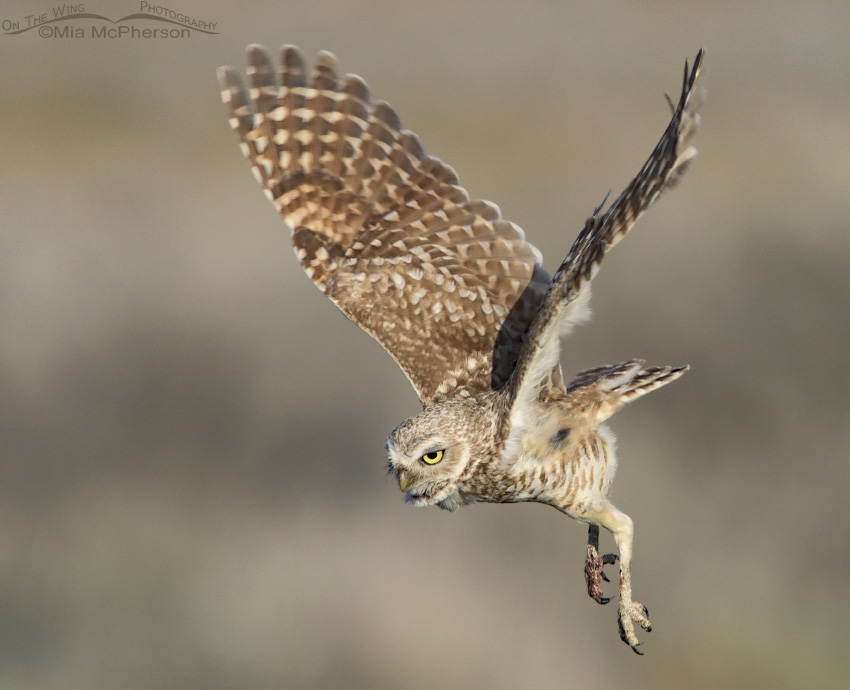 Adult Burrowing Owl in flight – Nikon D810, f7.1, 1/1600, ISO 400, Nikkor 500mm VR with 1.4x TC, natural light, not baited
Adult Burrowing Owl in flight – Nikon D810, f7.1, 1/1600, ISO 400, Nikkor 500mm VR with 1.4x TC, natural light, not baited
I spend a lot of time in the field looking for, observing and photographing owls and obtaining photos of them in flight can often be frustrating when I have the opportunity but very fulfilling when I accomplish my goal.
Burrowing Owls move extremely fast from lift off to flight, one second they are stationary on their perch and the next they have lifted off.
This adult Burrowing Owl was heading for the ground when I photographed him.
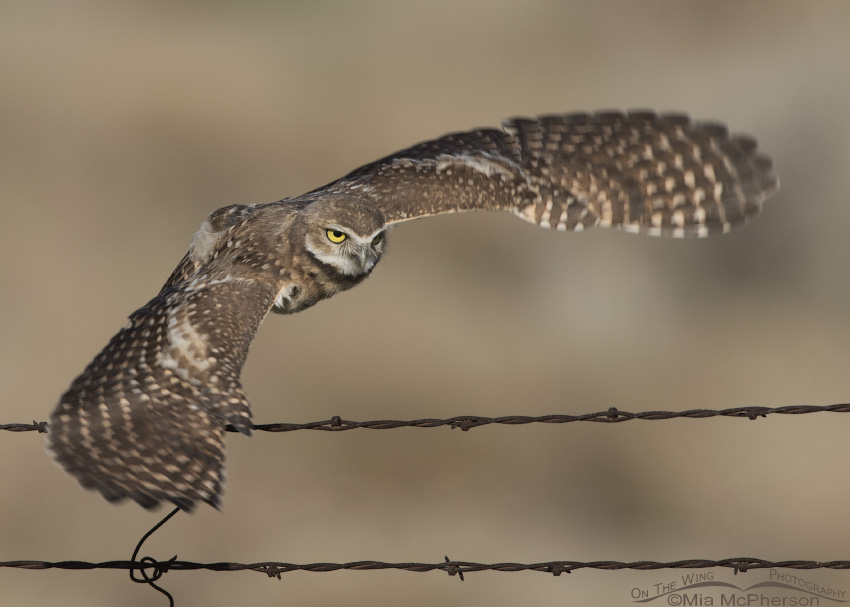 Focused flight of a juvenile Burrowing Owl – Nikon D810, f7.1, 1/1600, ISO 320, Nikkor 500mm VR with 1.4x TC, natural light, not baited
Focused flight of a juvenile Burrowing Owl – Nikon D810, f7.1, 1/1600, ISO 320, Nikkor 500mm VR with 1.4x TC, natural light, not baited
And this juvenile Burrowing Owl had just lifted off from the barbed wire below it. I didn’t have near enough shutter speed to freeze the motion of the wings but I quite like the motion blur because it implies action. I also like the focused look in the juvenile’s eyes.
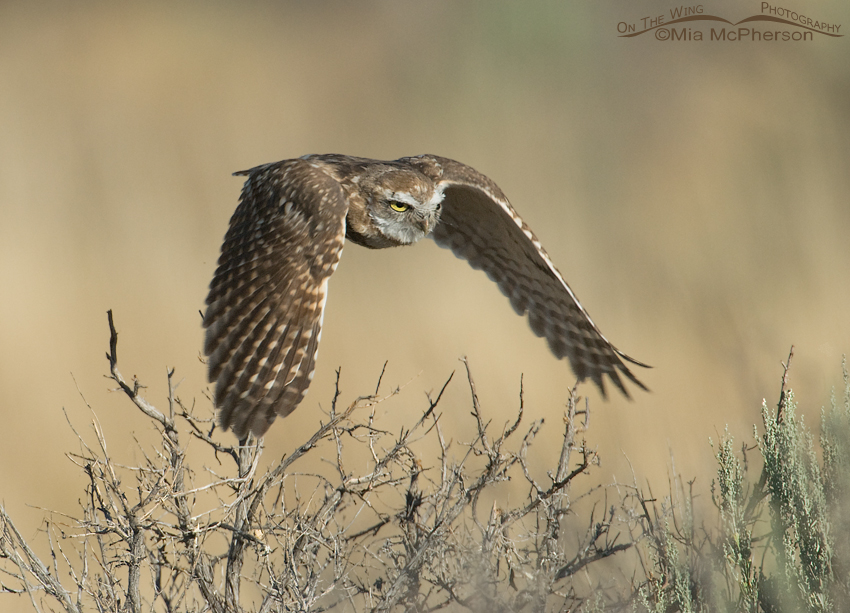 Juvenile Burrowing Owl lift off – Nikon D200, f7.1, 1/1500, ISO 400, Nikkor 200-400mm VR with 1.4x TC at 400mm, natural light, not baited
Juvenile Burrowing Owl lift off – Nikon D200, f7.1, 1/1500, ISO 400, Nikkor 200-400mm VR with 1.4x TC at 400mm, natural light, not baited
I don’t recall why this juvenile Burrowing Owl took flight but it too had a focused look in its eyes as it lifted off from the greasewood below it. Of the series that I took when it lifted off only this one image was sharply in focus, the rest were marginal.
These are small owls and are harder to track in my opinion than the Short-eared and Barn Owls below.
Short-eared Owls In Flight
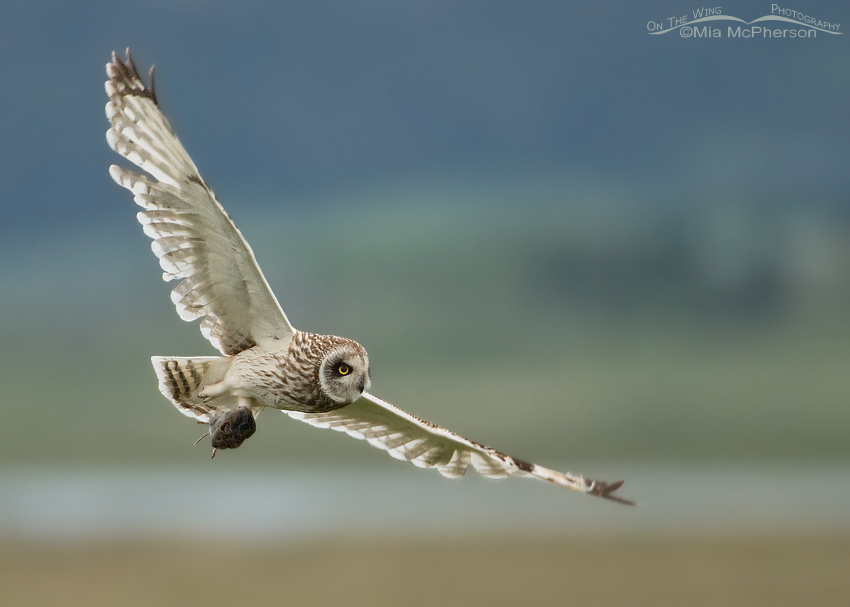 Male Short-eared Owl with prey for his young – Nikon D200, f5.6, 1/640, ISO 640, Nikkor 200-400mm VR with 1.4x TC at 400mm, natural light, not baited
Male Short-eared Owl with prey for his young – Nikon D200, f5.6, 1/640, ISO 640, Nikkor 200-400mm VR with 1.4x TC at 400mm, natural light, not baited
Short-eared Owls are larger and easier to track than the Burrowing Owls especially when they have a pattern of flight like this adult male had because he was bringing prey in for his young quite often and had two favorite perches he would use to land on and swap the prey from his talons to his bill before flying to the nest. So while his behavior wasn’t 100% predictable it was close enough to allow me to pre-focus close to his favorite perches at times and produce the images I desired.
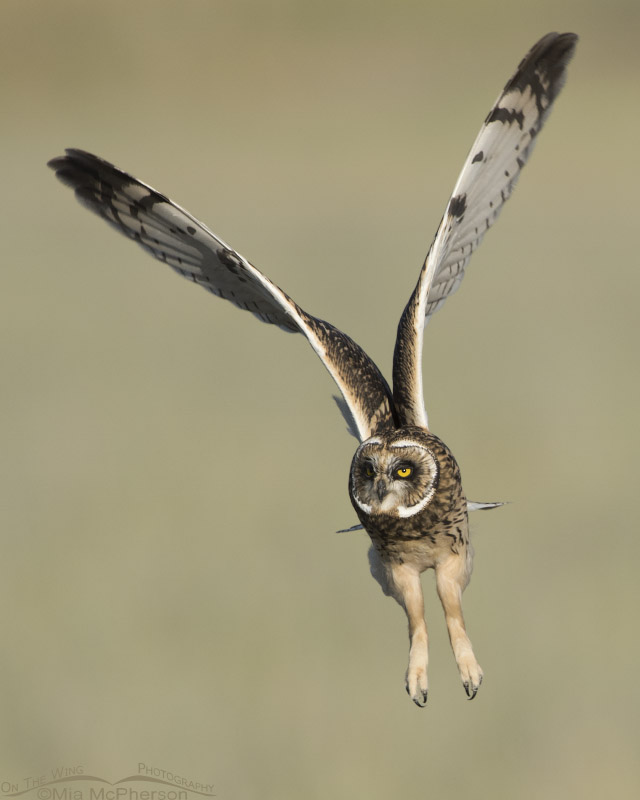 Juvenile Short-eared Owl lift off – Nikon D810, f6.3, 1/2000, ISO 400, Nikkor 500mm VR with 1.4x TC, natural light, not baited
Juvenile Short-eared Owl lift off – Nikon D810, f6.3, 1/2000, ISO 400, Nikkor 500mm VR with 1.4x TC, natural light, not baited
Short-eared Owls also take off a little bit slower than Burrowing Owls in my opinion. This juvenile Short-eared Owl had just lifted off and had not yet tucked its feet closer to its body and I quite like having the feet dangling down.
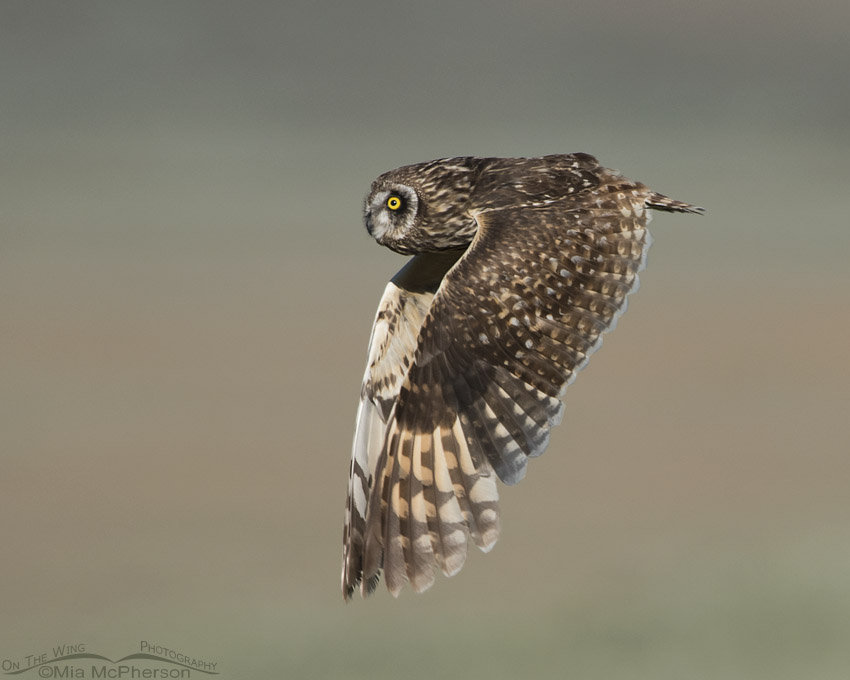 Juvenile Short-eared Owl in flight – Nikon D810, f6.3, 1/3200, ISO 400, Nikkor 500mm VR with 1.4x TC, natural light, not baited
Juvenile Short-eared Owl in flight – Nikon D810, f6.3, 1/3200, ISO 400, Nikkor 500mm VR with 1.4x TC, natural light, not baited
I had more than enough shutter speed when I took this photo of a juvenile Short-eared Owl in flight to freeze the motion of the wings. I also had great light on the owl but this is the only image of the series I took that had a great views of the owl’s eye.
Short-eared Owls have a loose, loopy, moth-like flight pattern and at times it can be a challenge to track them with a long lens.
Barn Owls In Flight
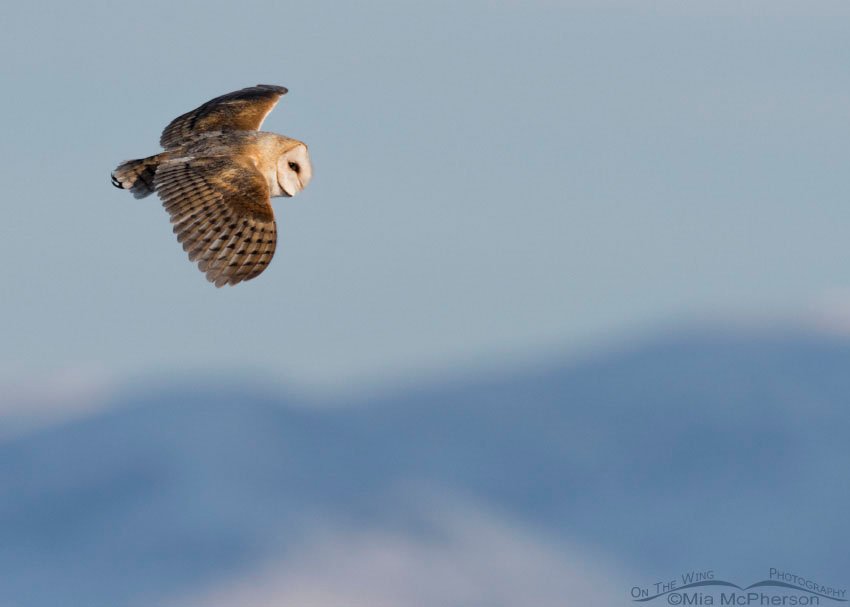 Barn Owl in flight over the Bear River – Nikon D810, f7.1, 1/4000, ISO 500, Nikkor 500mm VR with 1.4x TC, natural light, not baited
Barn Owl in flight over the Bear River – Nikon D810, f7.1, 1/4000, ISO 500, Nikkor 500mm VR with 1.4x TC, natural light, not baited
Barn Owls are also larger than Burrowing Owls and that can make it easier to track them with a long lens but they also turn and dive quickly when they are hunting and sometimes that takes me quite by surprise.
I don’t have as many chances to photograph Barn Owls in flight either because they are primarily nocturnal while the Burrowing and Short-eared Owls are diurnal. But during harsh winters with plenty of snow on the ground Barns Owls fly later into the morning and earlier in the evening. The same can be said when they are busy feeding a large brood in the early spring, they will hunt in the morning and late afternoons to keep their chicks fed.
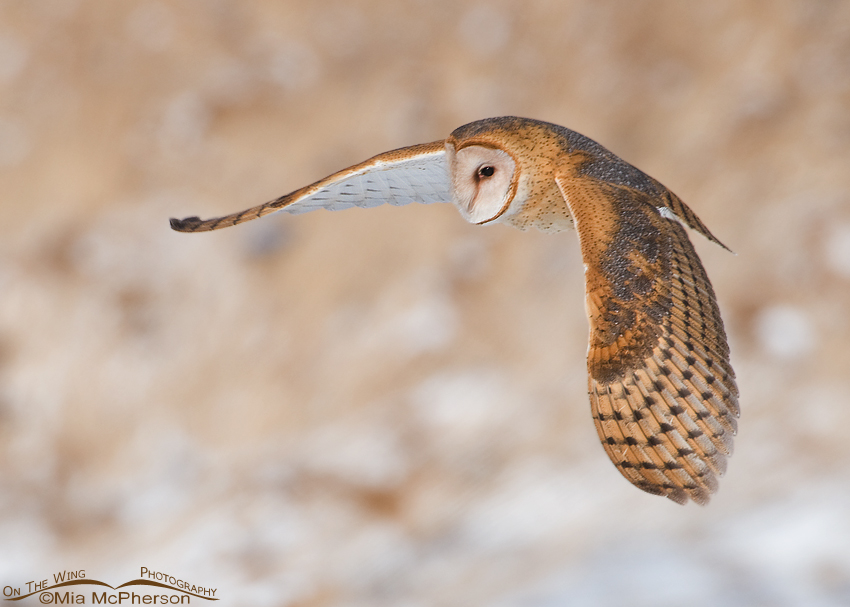 Adult Barn Owl in flight at Farmington Bay – Nikon D300, f7.1, 1/1000, ISO 500, Nikkor 200-400mm VR with 1.4x TC at 400mm, natural light, not baited
Adult Barn Owl in flight at Farmington Bay – Nikon D300, f7.1, 1/1000, ISO 500, Nikkor 200-400mm VR with 1.4x TC at 400mm, natural light, not baited
Barns Owls can approach quite close at times when they are hunting which makes them appear to have little fear of humans. They often seem to have a flight pattern they follow while hunting too so that can help predict where they might fly past. That is what happened when I took this photo and I had quite a few nice, sharp images of this owl as it flew past.
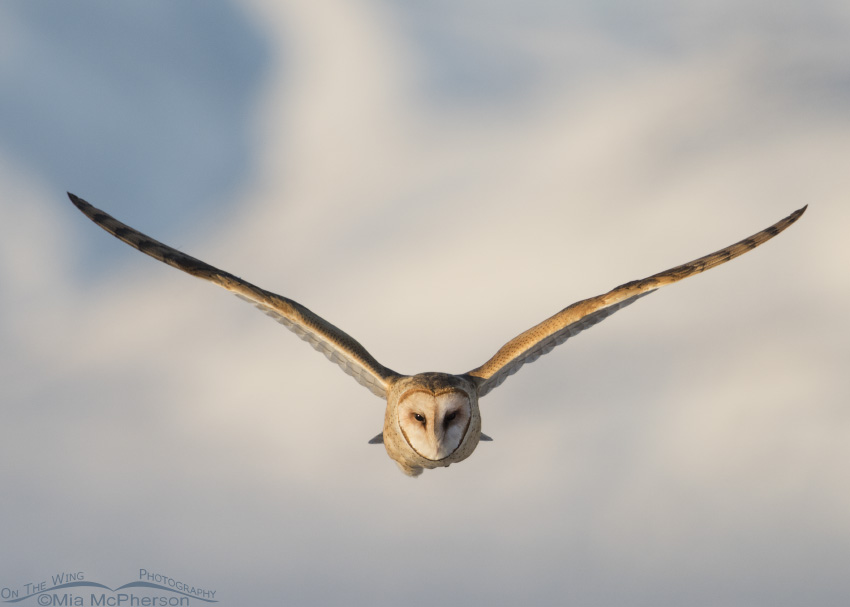 Barn Owl in flight head on – Nikon D810, f6.3, 1/2000, ISO 500, +0.3 EV, Nikkor 500mm VR with 1.4x TC, natural light, not baited
Barn Owl in flight head on – Nikon D810, f6.3, 1/2000, ISO 500, +0.3 EV, Nikkor 500mm VR with 1.4x TC, natural light, not baited
I have a great deal of fun photographing owls in flight even though it is always challenging. I can’t even estimate the times I have tried and ended up with images that went straight into my delete bin but when I get the images I want it makes all the mistakes I have made worth it one hundred times over. I find owls to be great subjects and they are so charismatic too so I always enjoy my time in the field with them.
Life is good.
Mia
To view more of my owl photos plus facts and information about owls click here.


what an emotional experience seeing, being with, these beautiful, incredible owls.
Thank you!
Sue
That’s an incredible collection of stunning and extremely challenging shots. Thanks so much for sharing the fruits of your extensive labors. I’ve forwarded this blog to many of my bird-loving friends, and I’m sure they’ll sign up for all your amazing photographic adventures. You are an amazing resource, and I truly appreciate all the pleasure and information you provide.
God Mia…what an incredible series of images! Every pic is stunning. You are a river…
Thanks.
It doesn’t get any better than this!
OWLS. You just put a wonderful start to my day.
Thank you for your dedication, your expertise, your generosity.
Skillful shots. Thank You for your many hours in the field and for sharing.
Bernie Paquette
Jericho, VT
https://vtbirdsandwords.blogspot.com/
Wow, these are just superb!
Wow! A parliament of owls right here on this page. Just gorgeous. (That devil wire still makes me nervous any time I see it and an owl in the same frame.)
Me, too…HATE the damned stuff!!!!
Snap.
Great pictures, Mia! My goal is to get half as good as you with a camera.
Spectacular shots! Your photos show details you would never get with the naked eye.
A true photofeast of owlness!!! LOVE IT!!! (Especially the first–a real beauty!!!)
Beautiful images Mia.
Phenomenal. I’ve struggled over the years to capture Burrowing Owls in flight and I’ve had very poor results, for the most part. As you say, they give virtually no warning when they lift off, and their bobbing, erratic flight is extremely difficult to track with a long lens. Congratulations on a series of terrific images.
Nirvana. Thanks for the inspiration. I’m off to feel the wind on my face (and late leaving because of you…. so worth it.)
Thanks very much for posting the excellent images and helpful, candid comments.